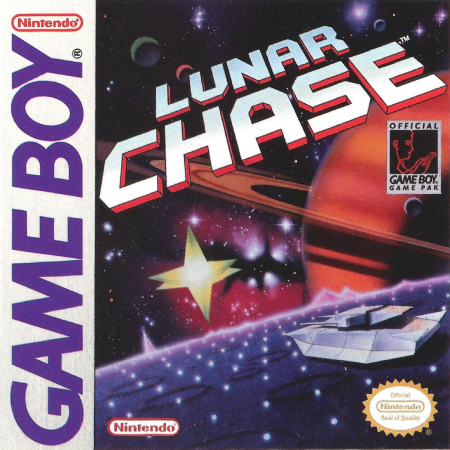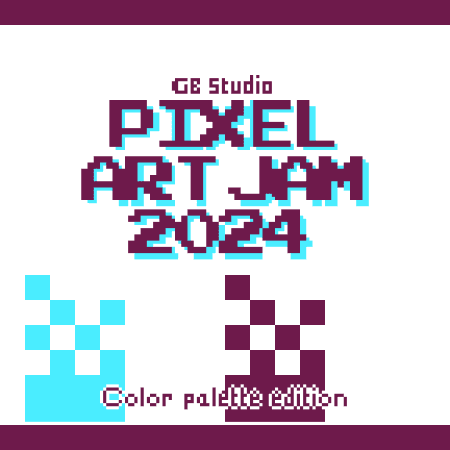Although many of the game retrospectives found here are for games you might’ve played back in the Game Boy’s hay day or nowadays through an emulator, today’s game is a little different. It was only released in Japan and although developed by a british programmer, it’s international release was scrapped. Of course I’m talking about X, also known as Ekkusu or by its original name, Lunar Chase.
Lunar Chase was developed by Argonaut Software, known for helping create Star Fox and its Super FX chip, getting late to the 3D platformer party with the memorable Croc, and predicting the future of console shooters with Alien Resurrection – although saying it was developed by Argonaut as a whole might be an overstatement. In reality the game was made solely by Dylan Cuthbert, a programmer at Argonaut who came to Nintendo at their 1991 CES show with a hacked up demo showing off a fully polygonal, first person game running on the Game Boy. No tricks, no special hardware, just pure dedication.
Nintendo instantly picked the game up and made a deal with Argonaut to contribute to development. Nintendo R&D1 musician Kazumi Totaka provided the game’s beautifully lush soundtrack and published the game in Japan as X, a name suggested over Cuthbert’s preferred name Lunar Chase. Perhaps the name change was to indicate the game’s out of this world graphics for a console that by 1991 was just finding its footing on what people would call serious games. Through the console’s early years, its library was mostly comprised of simple puzzle games and classic arcade action, with some gems from the big developers sprinkled in.
The game was released in May of 1992 to mixed reviews, with most magazines settling on the fact that although the game was utterly impressive, its difficulty made sure it was only for the most hardcore players. Nowadays the game’s recognized as the technical masterpiece it is and its importance in video game history as a whole. It is the project that launched the short but very fruitful relationship between Argonaut and Nintendo.
Sadly, an overseas release was not to be, although the international version was essentially done and the game was even shown on their 1992 Summer CES Media Kit, Nintendo of America decided against releasing it overseas. Cuthbert himself says they considered the game “too hardcore” for the Game Boy’s mostly young playerbase.
This cancellation was the end of Lunar Chase’s chance of arriving from overseas. For years all we received was a few leaked tech demos and a DSi-only sequel called X-Scape. In 2020, the full version of the game was found within the leaked Game Boy lotcheck, the last step a game goes through before manufacture, where Nintendo ensures the game works as intended and passes their quality assurance. Now that we’ve looked at the game’s history, let’s look at how the game introduces a whole new dimension to the player.
After the title screen finishes playing and you press start, the first thing you get is a couple of screens of text explaining the plot: a new human base is being built on the planet Tetamus II, and as the pilot of a special tank-like ship, your job is to defend the base from strange alien enemies trying to stop the humans every step of the way.
The game is a First Person Shooter, not quite in the style of Wolfenstein 3D or Doom, but more like Atari’s Battlezone, Academy by Pete Cooke (a game that directly inspired Cuthbert for X) and of course, the almighty Elite.
After the intro, you’re thrown into the game and the controls are explained through small text popups. They are pretty simple at their core: up to accelerate, down to decelerate/reverse and left or right to turn.
From now on, the game slowly teaches you the other features and the many things you can see on screen. It’s pretty cramped for a gameboy title.
This type of direct teaching to the player isn’t common for games of this era. Not only were games still growing out from the arcade, where gameplay and controls were so simple they could be explained on the start screen or a decal in the machine, but storage on these early but complex games was still a problem. Thus complex features, lore, and other unnecessary bits tended to be relegated to a mention in the game’s manual, which makes playing a lot of these games hard if not confusing.
After the tutorial (and an awesome tunnel travel sequence) we reach Tetamus II, and with it the game’s second way of teaching the player, the first real mission. The goal of the mission is very simple: recover the missing power crystal dropped somewhere on the planet’s surface. But even a task as simple as that lets you interact with many features all by yourself. The mission’s timer is very extensive so you have plenty of time to get the hang of everything. The game’s cutscenes (another rarity for the time outside of RPGs) also help you visualize the mission’s goal through the screen on the top left, showing off 3D rendering of the mission’s goals, enemies, new things to look out for, etc.
After a couple of missions, the game gets slowly harder, to the point where you can admit the magazines were right in their criticism of the game’s difficulty. This might’ve been the result of the game being primarily developed by a single person, since when you have no playtesters or other people to get feedback, you tend to forget how a new player may come completely blind into your game. This is something that you can see on many early computer games, since they were for the most part, developed by a very small group of people. This of course changed over the years when bigger teams were needed. Today, most game development companies have multiple people in charge of every aspect, with whole groups of people like playtesters and QA making sure everyone can play a game with no previous knowledge. This is of course limited to larger companies, as most indie games (and especially homebrew games for systems like the NES and Game Boy) are still developed in an environment similar to the one that gave birth to Lunar Chase, with a single developer taking care of every aspect from code to sound, or a handful of friends each taking care of art, code, and music.
Although some very impressive games have been made with GB Studio, almost to the point of looking like they weren’t made with the engine, some tend to fall into the same caveats games like X fell into on these earlier systems: being too obtuse for a new player to learn, or so hard due to a one-person job. Make sure to look at your game from a new player’s standpoint, maybe they understand your game in a different way, or a small startup screen could help, or maybe your game doesn’t make much sense to them at all. Sometimes, you gotta put your pride aside (may it come from a very cool looking tech trick or another aspect), look at your game and ask “is this fun?”, the answer is not always pretty, but it sure is useful. Hopefully this article has helped you see another way of teaching the player how your game works.

Chiptune goblin, programmer, freelancing composer and #1 Game Boy enthusiast.
(She/Her/They)





